Sunday, March 16, 2008
http://alanpetersworld.blogspot.com/2008/03/jimmah-idiot-carter-architect-of-our.html
JIMMAH THE IDIOT CARTER - ARCHITECT OF OUR TERRORIST PROBLEMS
Iran: Carter's Habitat For Inhumanity INVESTOR'S BUSINESS DAILY (with AntiMullah editorial comments)
Leadership: In the name of human rights, Jimmy Carter gave rise to one of the worst rights violators in history — the Ayatollah Khomeini. And now Khomeini's successor is preparing for nuclear war with Israel and the West.
Profile In Incompetence: Fourth In A Series
When President Carter took office in 1977, the Iran of Shah Mohammad Reza Pahlavi was a staunch American ally, a bulwark in our standoff with the Soviet Union, thwarting the dream held since the time of the czars of pushing south toward the warm waters of the appropriately named Persian Gulf.
Being an ally of the U.S. in the Cold War, Iran was a target for Soviet subversion and espionage. Like the U.S. in today's war on terror, Iran arrested and incarcerated many who threatened its sovereignty and existence, mainly Soviet agents and their collaborators.
This did not sit well with the former peanut farmer, who, on taking office, declared that advancing "human rights" was among his highest priorities. The Shah was one of his first targets.
As he's done with our terror-war detainees in Guantanamo, Carter accused the Shah of torturing some 3,000 "political" prisoners.
(Alan Note: Actual figure from Amnesty International was closer to 2,400 - mostly Tudeh Communists and Soviet supporting Marxist-Islamists).
He chastised the Shah for his human rights record and engineered the withdrawal of American support.
The irony here is that when Khomeini, a former Muslim exile in Paris, overthrew the Shah in February 1979, many of these 3,000 were executed by the ayatollah's firing squads along with 20,000 pro-Western Iranians.
According to "The Real Jimmy Carter," a book by Steven Hayward of the American Enterprise Institute: "Khomeini's regime executed more people in its first year in power than the Shah's Savak had allegedly killed in the previous 25 years."
The mullahs hated the Shah not because he was an oppressive dictator. They hated him because he was a secular, pro-Western leader who, in addition to other initiatives, was expanding the rights and roles of women in Iran society.
Alan Note: recently one of the pro-Mossadegh and Tudeh (Communist) party Iranian leaders openly stated: "we were not attacking the Shah for freedoms for the people but for freedom for us to import and install our foreign (Soviet) philosophies without fear and impediment).
Under Khomeini, women returned to their second-class role, and citizens were arrested for merely owning satellite dishes that could pick up Western television.
Khomeini established the first modern Islamic regime, a role model for the Taliban and jihadists to follow.
And when the U.S. Embassy was stormed that November and 52 Americans taken hostage for 444 days, America's lack of resolve was confirmed in the jihadist mind. On Nov. 4, 1979, some 400 Khomeini followers broke down the door of the embassy in Tehran, seizing the compound and the Americans inside.
The hostage takers posed for the cameras next to a poster with a caricature of Carter and the slogan: "America cannot do a damn thing."
(Alan Note: unpublicized intelligence at the time indicated that the hostage taking was arranged by Jimmuh the idiot Carter with Khomeini aides, like Yazdi, Bani-Sadr and Ghotbzadeh, who were U.S. aligned and attached to Khomeini by Carter, to ensure his re-election, when he (Carter) conveniently arrangd their release just before voting took place. Ronald Reagan found out about it, blocked the plot and arranged the release AFTER the election).
Indeed, America under Carter wouldn't do much. At least not until the 154th day of the crisis, when Carter, finally awakening to the seizure of U.S. diplomats and citizens on what was legally American soil, broke off diplomatic relations and began planning economic sanctions.
When Carter got around to hinting about the use of military force, Khomeini offered this mocking response: "He is beating on an empty drum. Neither does Carter have the guts for military action nor would anyone listen to him." Carter did actually try a military response of sorts. But like every other major policy action of his, he bungled it.
The incompetence of his administration would be seen in the wreckage in the Iranian desert, where a plan to rescue the hostages resulted in the loss of eight aircraft, five airmen and three Marines.
[Alan note: information obtained from post-Shah Iranian military and inteligence sources and more evidence from Americans, who were involved or on scene, all point to the so-called hostage rescue in fact being a failed arms delivery to Afghanistan, ("Green Belt" to contain Soviets project) where the Soviets shot and disabled one of the C130's bringing in weapons. Leaving Carter to either declare war on the Soviets for this act of war or pretend it was something else. Yes, a failed hostage rescue, which was still not operational after something was cobbled together by a cabal of U.S. intelligence and military groups, which all wanted a part in the operation. But whose witches brew was still not fully cooked].
Among the core group of hostage takers and planners of the attack on our embassy was 23-year-old Mahmoud Ahmadinejad, who learned firsthand the weakness and incompetence of Carter's foreign policy, one that House Speaker Nancy Pelosi and Senate Majority Leader Reid are now attempting to resurrect.
According to then-Iranian President Abolhassan Bani-Sadr, Ahmadinejad was among the hostage takers and the liaison between them and then prominent Tehran preacher Ali Khameini, later to become supreme leader of the Islamic Republic.
The Shah was forced into exile and on the run from Morocco to Egypt, the Bahamas, Mexico and finally Panama.
In July 1979, Vice President Walter Mondale and National Security Adviser Zbigniew Brzezinski told Carter they had changed their minds about offering the Shah permanent asylum. Carter's spiteful response was: "F*** the Shah. I'm not going to welcome him here when he has other places to go where he'll be safe."
In October 1979, the Shah, gravely ill with cancer, was granted a limited visa for treatment at the Cornell Medical Center in New York. He would die in Cairo in July 1980, an abandoned American friend. Our enemies took notes.
If the Shah had remained in power, it isn't likely the Iraq-Iran War, with upward of a million casualties on both sides, a war that saw Saddam Hussein first use mass-murder weapons, would have taken place.
(Alan Note: Iraq had tried once before, in the time of the Shah, to invade Iran over the dispute of the Shatt-Al Arab river between the two countries. This lasted all of four days before Saddam Hussein's forces were driven out with their tails between their legs. Nothing like the eight years under Carter's Khomeini).
Nor is it likely there would have been a Desert Storm, fought after Hussein invaded Kuwait to strengthen his strategic position. That led to bases in Saudi Arabia that fueled Islamofascist resentment, one of the reasons given by Osama bin Laden for striking at America, the Great Satan.
Carter's Khomeini introduced the idea of suicide bombers to the Palestine Liberation Organization and paid $35,000 to PLO families who would offer up their children as human bombs to kill as many Israelis as possible.
It was Carter's Khomeini who would give the world Hezbollah to make war on Israel and destroy the multicultural democracy that was Lebanon.
And perhaps Jimmy has forgotten that Hezbollah, which he helped make possible, killed 241 U.S. troops in their Beirut barracks in 1983.
The Soviet Union, seeing us so willingly abandon a staunch ally, invaded Afghanistan in December 1979, just six months after Carter and Russian leader Leonid Brezhnev embraced after signing a new arms-control treaty.
(Alan Note: the British Foreign & Commonwealth Office sent some 200 observers to monitor the Carter-Reagan election to note whether the Soviets would try to spend enough money to "buy" the election for their "mole" Jimmuh Carter).
And it was the resistance to the Soviet invasion that helped give birth to the Taliban.
As Hayward observes, the fall of Iran, hastened by Jimmy Carter, "set in motion the advance of radical Islam and the rise of terrorism that culminated in Sept. 11."
Writer Christopher Hitchens recalls a discussion he had with Eugene McCarthy, a Democrat and former candidate for that party's presidential nomination, where McCarthy voted for Ronald Reagan instead of Carter in 1980.
The reason? Carter had "quite simply abdicated the whole responsibility of the presidency while in office. He left the nation at the mercy of its enemies at home and abroad (including the Soviets). He was quite simply the worst president we ever had."
Quite simply, we concur. Though he is the best SOVIET president America ever elected!
(Alan Note: And Carter's liberal, to the point of Communist/Socialist leanings, can be seen in his staunch ties and support of Cuba's Castro, Venezuela's Chavez, other South American leftist governments and his anti-America diatribe attacks on anything that confronts the terrorism he stupidly created. He has a share in all the blood, still on his hands, of all innocents killed by those he actively helped put in place).
Defense & Foreign Affairs DailyVolume XXII, No. 46 Monday, March 15, 2004
Founded in 1972 Produced at least 200 times a year
© 2004, Global Information System, ISSAExclusive:
Rôle of US Former Pres. Carter Emerging in Illegal Financial Demands on Shah of Iran
Exclusive. Analysis. By Alan Peters, GIS.
Strong intelligence has begun to emerge that US President Jimmy Carter attempted to demand financial favors for his political friends from the Shah of Iran. The rejection of this demand by the Shah could well have led to Pres. Carter's resolve to remove the Iranian Emperor from office.
The linkage between the destruction of the Shah's Government directly attributable to Carters actions and the Iran-Iraq war which cost millions of dead and injured on both sides, and to the subsequent rise of radical Islamist terrorism makes the new information of considerable significance.
Pres. Carter's anti-Shah feelings appeared to have ignited after he sent a group of several of his friends from his home state, Georgia, to Tehran with an audience arranged with His Majesty directly by the Oval Office and in Carter's name.
At this meeting, as reported by Prime Minister Amir Abbas Hoveyda to some confidantes, these businessmen told the Shah that Pres. Carter wanted a contract. previously awarded to Brown & Root to build a huge port complex at Bandar Mahshahr, to be cancelled and as a personal favor to him to be awarded to the visiting group at 10 percent above the cost quoted by Brown & Root.
The group would then charge the 10 percent as a management fee and supervise the project for Iran, passing the actual construction work back to Brown & Root for implementation, as previously awarded. They insisted that without their management the project would face untold difficulties at the US end and that Pres. Carter was trying to be helpful.
They told the Shah that in these perilous political times, he should appreciate the favor which Pres. Carter was doing him.
According to Prime Minister Hoveyda, the Georgia visitors left a stunned monarch and his bewildered Prime Minister speechless, other than to later comment among close confidantes about the hypocrisy of the US President, who talked glibly of God and religion but practiced blackmail and extortion through his emissaries.
The multi-billion dollar Bandar Mahshahr project would have made 10 percent management fee a huge sum to give away to Pres. Carter's friends as a favor for unnecessary services. The Shah politely declined the personal management request which had been passed on to him. The refusal appeared to earn the Shah the determination of Carter to remove him from office.
Carter subsequently refused to allow tear gas and rubber bullets to be exported to Iran when anti-Shah rioting broke out, nor to allow water cannon vehicles to reach Iran to control such outbreaks, generally instigated out of the Soviet Embassy in Tehran.
There was speculation in some Iranian quarters as well as in some US minds at the time and later that Carter's actions were the result of either close ties to, or empathy for, the Soviet Union, which was anxious to break out of the longstanding US-led strategic containment of the USSR, which had prevented the Soviets from reaching the warm waters of the Indian Ocean.
Sensing that Iran's exports could be blocked by a couple of ships sunk in the Persian Gulf shipping lanes, the Shah planned a port which would have the capacity to handle virtually all of Irans sea exports unimpeded. Contrary to accusations leveled at him about the huge, megalomaniac projects like Bandar Mahshahr, these served as a means to provide jobs for a million graduating high school students every year for whom there were no university slots available.
Guest workers, mostly from Pakistan and Afghanistan were used to start and expand the projects and Iranians replaced the foreigners as job demand required, while essential infrastructure for Iran was built ahead of schedule. In late February 2004, Islamic Iran's Deputy Minister of Economy stated that the country needed $18-billion a year to create one-million jobs and achieve economic prosperity. And at the first job creation conference held in Tehran's Amir Kabir University, Iran's Student News Agency estimated the jobless at some three-million. Or a budget figure requirement of $54-billion to deal with the problem.
Thirty years earlier, the Shah had already taken steps to resolve the same challenges, which were lost in the revolution which had been so resolutely supported by Jimmy Carter.
A quarter-century after the toppling of the Shah and his Government by the widespread unrest which had been largely initiated by groups with Soviet funding but which was, ironically, to bring the mullahs rather than the radical-left to power Ayatollah Shariatmadari's warning that the clerics were not equipped to run the country was echoed by the Head of Islamic Iran's Investment Organization, who said:
We are hardly familiar with the required knowledge concerning the proper use of foreign resources both in State and private sectors, nor how to make the best use of domestic resources. Not even after 25 years.
Historians and observers still debate Carter's reasons for his actions during his tenure at the White House, where almost everything, including shutting down satellite surveillance over Cuba at an inappropriate time for the US, seemed to benefit Soviet aims and policies.
Some claim he was inept and ignorant, others that he was allowing his liberal leanings to overshadow US national interests.
The British Foreign & Commonwealth Office had enough doubts in this respect, even to the extent of questioning whether Carter was a Russian mole, that they sent around 200 observers to monitor Carters 1980 presidential campaign against Ronald Reagan to see if the Soviets would try to buy the presidency for Carter.
In the narrow aspect of Carter setting aside international common sense to remove the USA's most powerful ally in the Middle East, this focused change was definitely contrary to US interests and events over the next 25 years proved this.
According to Prime Minister Hoveyda, Jimmy Carters next attack on the Shah was a formal country to country demand that the Shah sign a 50-year oil agreement with the US to supply oil at a fixed price of $8 a barrel.
No longer couched as a personal request, the Shah was told he should heed the contract proposal if he wished to enjoy continued support from the US - in these perilous, political times, which could become much worse.
Faced with this growing pressure and threat, the monarch still could not believe that Iran, the staunchest US ally in the region, other than Israel, would be discarded or maimed so readily by Carter, expecting he would be prevailed upon by more experienced minds to avoid destabilizing the regional power structure and tried to explain his position.
Firstly, Iran did not have 50-years of proven oil reserves that could be covered by a contract. Secondly, when the petrochemical complex in Bandar Abbas, in the South, was completed a few years later, each barrel of oil would produce $1,000 worth of petrochemicals so it would be treasonous for the Shah to give oil away for only $8.
Apologists, while acknowledging that Carter had caused the destabilization of the monarchy in Iran, claim he was only trying to salvage what he could from a rapidly deteriorating political situation to obtain maximum benefits for the US. But, after the Shah was forced from the throne, Carters focused effort to get re-elected via the Iran hostage situation points to less high minded motives.
Rumor has always had it that Carter had tried to negotiate to have the US hostages, held for 444 days by the Islamic Republic which he had helped establish in Iran, released just before the November 1980 election date, but that opposition (Republican) candidate Ronald Reagan had subverted, taken over and blocked the plan.
An eye-witness account of the seizure by students of the US Embassy on November 4, 1979, in Tehran confirms a different scenario.The mostly rent-a-crowd group of students organized to climb the US Embassy walls was spearheaded by a mullah on top of a Volkswagen van, who with a two-way radio in one hand and a bullhorn in the other, controlled the speed of the march on the Embassy according to instructions he received over the radio.
He would slow it down, hurry it up and slow it down again in spurts and starts, triggering the curiosity of an educated pro-Khomeini vigilante, who later told the story to a friend in London.
When asked by the vigilante for the reason of this irregular movement, the stressed cleric replied that he had instructions to provide the US Embassy staff with enough time to destroy their most sensitive documents and to give the three most senior US diplomats adequate opportunity to then take refuge at the Islamic Republic Foreign Ministry rather than be taken with the other hostages.
Someone at the Embassy was informing the Foreign Ministry as to progress over the telephone and the cleric was being told what to do over his radio.
The vigilante then asked why the Islamic Government would bother to be so accommodating to the Great Satan and was told that the whole operation was planned in advance by Prime Minister Mehdi Bazargans revolutionary Government with Pres. Carter in return for Carter having helped depose the Shah and that this was being done to ensure Carter got re-elected.
"He helped us, now we help him," was the matter-of-fact comment from the cleric.
In 1978 while the West was deciding to remove His Majesty Mohammad Reza Shah Pahlavi from the throne, Ayatollah Shariatmadari was telling anyone who would listen not to allow Ayatollah Ruhollah Khomeini and his velayat faghih (Islamic jurisprudence) version of Islam to be allowed to govern Iran.
Ayatollah Shariatmadari noted: We mullahs will behave like bickering whores in a brothel if we come to power ... and we have no experience on how to run a modern nation so we will destroy Iran and lose all that has been achieved at such great cost and effort.
Pres. Carter reportedly responded that Khomeini was a religious man as he was himself and that he knew how to talk to a man of God, who would live in the holy city of Qom like an Iranian pope and act only as an advisor to the secular, popular revolutionary Government of Mehdi Bazargan and his group of anti-Shah executives, some of whom were US-educated and expected to show preferences for US interests.
Carter's mistaken assessment of Khomeini was encouraged by advisors with a desire to form an Islamic green belt to contain atheist Soviet expansion with the religious fervor of Islam.
Eventually all 30 of the scenarios on Iran presented to Carter by his intelligence agencies proved wrong and totally misjudged Khomeini as a person and as a political entity.
Today, Iranian-born, Grand Ayatollah Ali Al-Sistani, the dominant Shia leader in Iraq faces Shariatmadari's dilemma and shares the same quietist Islamic philosophy of sharia (religious law) guidance rather than direct governing by the clerics themselves.
Sistani's Khomeini equivalent, militant Ayatollah Mohammed Baqir al-Sadr, was gunned down in 1999 by then-Iraqi Pres. Saddam Hussein's forces. Sadr's son, 30-year-old Muqtada al-Sadr, lacks enough followers or religious seniority/clout to immediately oppose Sistani but has a hard core of violent followers biding their time.
According to all estimates, the young Sadr waits for the June 2004 scheduled handover of power in Iraq, opening the way for serious, militant intervention on his side by Iranian clerics. The Iranian clerical leaders, the successors to Khomeini, see, far more clearly than US leaders and observers, the parallels between 1979-80 and 2004:
as a result, they have put far more effort into activities designed to ensure that Reagan's successor, US Pres. George W. Bush, does not win power.
Footnotes:1. © 2004 Alan Peters. The name Alan Peters is a nom de plume for a writer who was for many years involved in intelligence and security matters in Iran. He had significant access inside Iran at the highest levels during the rule of the Shah, until early 1979.
2. See Defense & Foreign Affairs Daily, March 2, 2004: Credibility and Legitimacy of Ruling Iranian Clerics Unraveling as Pressures Mount Against Them; The Source of Clerical Ruling Authority Now Being Questioned. This report, also by Alan Peters, details the background of Ayatollah Khomeini, the fact that his qualifications for his religious title were not in place, and the fact that he was not of Iranian origin.
Some articles have appeared on the Internet concerning Jimmy Carter of which the public should be aware. Here are the opening paragraphs with the links to the original articles:
War reveals new information that Carter, as president and later as a private citizen, sought the help of an avowed foreign enemy of this country to undermine Reagans candidacy in 1980 and, even more shocking, tried to cripple President Reagan's foreign policy in 1984.
The former Democrat president, who had been ousted by voters four years earlier, wanted the Soviets to help him put a Democrat back in the White House.
Speaking Tuesday at a seminar at the Institute of World Politics, the book's author, Peter Schweizer, said Jimmy Carter owes a full explanation, and then depending on his answer, a decision could be made as to whether the former president "stepped over the line from pure dissent to giving aid and comfort to the enemy.
NewsMax.com CEO Christopher Ruddy has written that Carter "may well have committed treason by enlisting the help of the Soviet Union in the 1980 and 1984 presidential elections.
"Its a fair question for him [Carter] to give his account of what happened, and a response, which he has not done, the author told NewsMax.com. "Then, you know, depending on his reaction and response, there needs to be further discussion.
The other thing potentially that perhaps ought to be asked [is] that Moscow release any files it has on the meetings."
All we have right now, Schweizer added, "is based on these accounts by [former Soviet Ambassador] Dobrynin. And it begs the question: Is there any more material based on his [Carter's] dealings with Moscow?
'Carter Won't Forget' Soviet Assistance - Schweizers book, which is going straight to the top of the best-seller list, reveals that during the 1980 campaign when Reagan was gaining in the polls, Carter "dispatched [pro-Soviet industrialist] Armand Hammer to the Soviet Embassy for a secret meeting with Ambassador Dobrynin to ask for Soviet help with Jewish emigration and other potential vote-getting issues for a sitting president.
The Soviets were promised that "Carter wont forget that service if he is re-elected. Schweizer reports that when Reagan was running for re-election in 1984, Carter himself visited Ambassador Dobrynin warning there "would not be a single agreement on arms control, especially on nuclear arms, as long as Reagan was in power.
Carter wanted the Soviet Union to help the Democrats regain the presidency.
History shows his prophecy about no hope for a nuclear arms agreement to be wrong. It was a part of Reagan's success in ending the Cold War on Americas terms.
Asking Carter to explain to Americans this part of his stewardship is most "reasonable, in Schweizers view. When he asked the former president about this, all the author got was "No comment.location: http://www.newsmax.com/archives/articles/2002/10/29/201145.shtml
Peter Schweizer, a Hoover Institution research fellow, has just written a new book, "Reagan's" War: The Epic Story of His Forty-Year Struggle and Final Triumph Over Communism."
This book may well force historians to revise the history of the Cold War.
Schweizer, after scouring once-classified KGB, East German Stasi and Soviet Communist Party files, discovered incontrovertible evidence that the Soviets not only played footsie with high-ranking Democrats, they also worked behind the scenes to influence American elections.
In "Reagan's War," Schweizer shows how the Democrats worked with Moscow to try to undermine Reagan before and after he became president.
Jimmy Carter's Dirty Tricks
Soviet diplomatic accounts and material from the archives show that in January 1984, former President Jimmy Carter dropped by Soviet Ambassador Anatoly Dobrynin's residence for a private meeting.
Carter expressed his concern about and opposition to Reagan's defense buildup. He boldly told Dobrynin that Moscow would be better off with someone else in the White House. If Reagan won, he warned, "There would not be a single agreement on arms control, especially on nuclear arms, as long as Reagan remained in power."Using the Russians to influence the presidential election was nothing new for Carter.
Schweizer reveals Russian documents that show that in the waning days of the 1980 campaign, the Carter White House dispatched businessman Armand Hammer to the Soviet Embassy.
Hammer was a longtime Soviet-phile, and he explained to the Soviet ambassador that Carter was "clearly alarmed" at the prospect of losing to Reagan. Hammer pleaded with the Russians for help. He asked if the Kremlin could expand Jewish emigration to bolster Carter's standing in the polls.
'Carter Won't Forget That Service'
"Carter won't forget that service if he is elected," Hammer told Dobrynin. Carter was not the only Democrat to make clear to the Russians where their loyalty lay. As the election neared in 1984, Dobrynin recalls meetings with Speaker of the House Thomas P. "Tip" O'Neill.
O'Neill told Dobrynin that no effort should be spared to prevent "that demagogue Reagan" from being re-elected. location: http://www.newsmax.com/showinside.shtml?a=2002/10/16/214040
Jimmy Carter and the 40 Ayatollahs
Diane AldenWednesday, Oct. 30, 2002
By Middle East standards the Shah of Iran was a progressive democrat. In the eyes of President Jimmy Carter and certain foreign policy factions in the State Department and various think tanks, the Shah represented the heart of darkness.
In an article in May 2002, NewsMax's Chris Ruddy pointed out:"Remember Carter's human rights program, where he demanded the Shah of Iran step down and turn over power to the Ayatollah Khomeini? "
No matter that Khomeini was a madman. Carter had the U.S. Pentagon tell the Shah's top military commanders about 150 of them to acquiesce to the Ayatollah and not fight him.
"The Shah's military listened to Carter. All of them were murdered in one of the Ayatollah's first acts."
By allowing the Shah to fall, Carter created one of the most militant anti-American dictatorships ever."[See: Jimmy Carter's Trail of Disaster.]
As has been reported in NewsMax previously, Carter still receives a great deal of money from the Arab world for his Carter Center in Atlanta.
http://www.newsmax.com/archives/articles/2002/10/29/170201.shtml
Carter Sold out Iran 1977-1978
As if a light were switched off, the Shah of Iran, Mohammad Reza Pahlavi, portrayed for 20 years as a progressive modern ruler by Islamic standards, was suddenly, in 1977-1978, turned into this foaming at the mouth monster by the international left media.
Soon after becoming President in 1977, Jimmy Carter launched a deliberate campaign to undermine the Shah. The Soviets and their left-wing apparatchiks would coordinate with Carter by smearing the Shah in a campaign of lies meant to topple his throne.
The result would be the establishment of a Marxist/Islamic state in Iran headed by the tyrannical Ayatollah Ruhollah Khomeini. The Iranian revolution, besides enthroning one of the worlds most oppressive regimes, would greatly contribute to the creation of the Marxist/Islamic terror network challenging the free world today.
At the time, a senior Iranian diplomat in Washington observed, President Carter betrayed the Shah and helped create the vacuum that will soon be filled by Soviet-trained agents and religious fanatics who hate America.
Under the guise of promoting human rights, Carter made demands on the Shah while blackmailing him with the threat that if the demands werent fulfilled, vital military aid and training would be withheld. This strange policy, carried out against a staunch, 20 year Middle East ally, was a repeat of similar policies applied in the past by US governments to other allies such as pre Mao China and pre Castro Cuba.
(ALAN NOTE: and currently by Marxist-Islamic Oba-Hussein-Khomeini)
Carter started by pressuring the Shah to release political prisoners including known terrorists and to put an end to military tribunals. The newly released terrorists would be tried under civil jurisdiction with the Marxist/Islamists using these trials as a platform for agitation and propaganda.
This is a standard tactic of the left then and now.
(And Oba-Hussein's with Gitmo today)
The free world operates at a distinct dis-advantage to Marxist and Islamic nations in this regard as in those countries, trials are staged to show the political faith of the ruling elite. Fair trials, an independent judiciary, and a search for justice is considered to be a western bourgeois prejudice.
Carter pressured Iran to allow for free assembly which meant that groups would be able to meet and agitate for the overthrow of the government. It goes without saying that such rights didnt exist in any Marxist or Islamic nation. The planned and predictable result of these policies was an escalation of opposition to the Shah, which would be viewed by his enemies as a weakness.
A well-situated internal apparatus in Iran receiving its marching orders from the Kremlin egged on this growing opposition. By the fall of 1977, university students, working in tandem with a Shiite clergy that had long opposed the Shah's modernizing policies, began a well coordinated and financed series of street demonstrations supported by a media campaign reminiscent of the 1947-1948 campaign against Chinas Chiang Ki Shek in favor of the agrarian reformer Mao tse Tung.
At this point the Shah was unable to check the demonstrators, who were instigating violence as a means of inflaming the situation and providing their media stooges with atrocity propaganda. In Iran rumors circulated the CIA was organizing the demonsrations.
In November 1977, the Shah and his Empress, Farah Diba, visited the White House where they were met with hostility. They were greeted by nearly 4,000 Marxist-led Iranian students, many wearing masks, waving clubs, and carrying banners festooned with the names of Iranian terrorist organizations.
The rioters were allowed within 100 feet of the White House where they attacked other Iranians and Americans gathered to welcome the Shah. Only 15 were arrested and quickly released. Inside the White House, Carter pressured the Shah to implement even more radical changes. Meanwhile, the Soviets were mobilizing a campaign of propaganda, espionage, sabotage, and terror in Iran. The Shah was being squeezed on two sides.
In April 1978, Moscow would instigate a bloody coup in Afghanistan and install the communist puppet Nur Mohammad Taraki. Taraki would proceed to call for a jihad against the Ikhwanu Shayateen which translates into brothers of devils, a label applied to opponents of the new red regime in Kabul and to the Iranian government.
Subversives and Soviet-trained agents swarmed across the long Afghanistan/Iran border to infiltrate Shiite mosques and other Iranian institutions. By November 1978, there was an estimated 500,000 Soviet backed Afghanis in Iran where, among other activities, they set up training camps for terrorists.
Khomeini, a 78-year-old Shiite cleric whose brother had been imprisoned as a result of activities relating to his Iranian Communist party affiliations, and who had spent 15 years in exile in Bath Socialist Iraq, was poised to return. In exile, Khomeini spoke of the creation of a revolutionary Islamic republic, which would be anti-Western, socialist, and with total power in the hands of an ayatollah.
In his efforts to violently overthrow the government of Iran, Khomeini received the full support of the Soviets. Nureddin Kianuri, head of the Iranian Communist Tudeh Party, in exile in East Berlin, stated, The Tudeh Party approves Ayatollah Khomeinis initiative in creating the Islamic Revolutionary Council. The ayatollahs program coincides with that of the Tudeh Party.
Khomeini's closest advisor, Sadegh Ghothzadeh, was well known as a revolutionary with close links to communist intelligence. In January 1978, Pravda, the official Soviet organ, officially endorsed the Khomeini revolution. American leaders were also supporting Khomeini. After the Pravda endorsement, Ramsey Clark, who served as Attorney General under President Lyndon B. Johnson, held a press conference where he reported on a trip to Iran and a Paris visit with Khomeini.
He urged the US government to take no action to help the Shah so that Iran could determine its own fate. Clark played a behind the scenes role influencing members of Congress to not get involved in the crisis. Perhaps UN Ambassador Andrew Young best expressed the thinking of the left at the time when he stated that, if successful, Khomeini would eventually be hailed as a saint.
Khomeini was allowed to seize power in Iran and, as a result, we are now reaping the harvest of anti-American fanaticism and extremism. Khomeini unleashed the hybrid of Islam and Marxism that has spawned suicide bombers and hijackers.
President Jimmy Carter, and the extremists in his administration are to blame and should be held accountable. Chuck Morse Is the author of Why Im a Right-Wing Extremist
http://www.chuckmorse.com/http://www.americanewsnet.com/cmntrs/cmntrs04.htm
The following article appeared on an Iranian Chat Room as a response to the previous article cited by Chuck Morse:
http://66.34.243.131/iran/html/modules.php?name=News&file=comments&sid=774&tid=112&mode=&order=&thold= Home Links Topics Downloads Submit Content
Re: Carter Sold Out Iran 1977-1978 (Score: 0) by on Sunday, February 16 @ 22:48:52 CST
Some other History to go along with your Carter allegations. It was about OIL then as well. by Dr. Norman Livergood (excerpted from The New British Oil Imperialism) " At the end of World War II, the British-Persian Oil Company controlled the vast oil fields in Iran. The Persians had declared their alignment with Adolf Hitler's Nazi "Aryan Race" movement and were fully expecting German General Rommel to come rushing across Africa and "free" them from the British.
They had even proclaimed their alignment with Hitler by changing the name of their country from Persia to "Aryan," (or "Iran" in the Farsi language), but the Germans failed to save them.
To take control of Persian Gulf oil from the British, in 1954 Kermit Roosevelt, nephew of Franklin, led an American CIA coup to take control of Iran and place in power the American-backed Shah of Iran. The Shah expelled the British, and Rockefeller's Standard Oil now had control of the British-Persian petroleum fields.
In the early 1950s, Occidental Petroleum's Armand Hammer, a satrap of the Rockefellers, negotiated a deal with Russian dictator Joseph Stalin to buy his oil--thus effectively stealing it from the Russian people. Russian oil was then sold on the world market at a much higher price than Stalin could get by marketing it himself, because few countries were willing to buy oil from Stalin.
Occidental Petroleum and Russia built two large pipelines, from the Russian oil fields down along both sides of the Caspian Sea, terminating in the old British-Persian - -now Standard Oil -- oil fields in Iran.
For the next 45 years, Russia secretly sent its oil out through those pipelines and Standard Oil sold the oil on the world market at the "West Texas Crude" price by calling it Iranian oil. For almost fifty yeas most Americans have been using Russian oil in their cars. Standard Oil refineries, which produce gasoline from crude oil, are located at large sea ports like San Francisco, Houston or Los Angeles, not near any of the large American oil fields.
Most oil from the Persian Gulf is shipped in oil tankers to those large American refinery-ports. In 1979, the Standard Oil-backed Shah of Iran was driven out by a British-backed coup and the long-time British asset, Ayatollah Khomeni, put into power. The flow of Russian oil through Iran suddenly stopped. Other oil pipelines were constructed through Iraq and Turkey. The Russian oil was now called OPEC Arabian-Middle Eastern oil and marketed at the even higher "spot market" price.
So in 1979, in America and Europe, we suddenly experienced gasoline shortages and huge increases in the price of gasoline. Also in 1979 Standard Oil-Russian oil interests tried to secure an alternate, short, safe oil pipeline route from Russia through neighboring Afghanistan, but this only resulted in a prolonged war and the project was abandoned.
When the new British-controlled regime in Iran came into power, the Rockefeller-influenced U.S. government immediately threatened to seize $7.9 billion of Iranian assets located in the U.S. On November 4, 1979 Iranian "terrorists" captured and held hostage 65 Americans.
Essentially, Standard Oil was being blackmailed by the hostage strategy. After lengthy negotiations, the Rockefeller-created President Jimmy Carter approved the electronic transfer of 7.9 billion dollars from U.S. accounts to the Iranian regime on January 20, 1981.
On Wednesday January 27, 1988, as announced in the Wall Street Journal, Standard Oil merged with British Petroleum. This actually represents Standard Oil's buyout of British Petroleum, the name of the newly merged company being BP-America. The Wall Street Journal did not see fit to mention worries about the world-wide predatory marketing practices of a deceptively titled Standard Oil regime.
During the last 13 years, BP-America has merged with, or controls, all of the old Standard Oil "mini-companies" which existed before the original breakup by the U.S. government in 1911. The new Standard Oil regime is now known as BP-AMOCO, and few people in the world realize what has happened. It's now possible to understand why British Prime Minister Blair has become the spokesman for the new wars against terrorism (actually the war for Caspian Sea oil)."
Withdrawal of support for the Shah of Iran
http://www.americandaily.com/item/1340
Jimmy Carter's Nobel LegacyEdward Daley, 03/10/03In 1977, Jimmy Carter withdrew U.S. support for the Shah of Iran, Mohammed Reza Pahlavi.
The Shah's regime "engaged in the torture" of it's (Communist) enemies, a practice which Carter vehemently opposed. However, that regime was the strongest ally of both the U.S. and Israel in the region, and although allegedly brutal, was certainly no more so than any number of far more fanatical, anti-American and anti-Semitic governments in the Middle East.
Carter also ordered the CIA to cease funding to Iran's Mullahs, who had basically been accepting money in exchange for inhibiting anti-western sentiment in the region.
Shortly afterward, the Shah was overthrown. The new regime, under the direction of the Islamic extremist Ayatollah Khomeini, then set to work reversing every pro-western policy of the Shah's government, such as women's rights and the citizenry's access to western media. The torture and/or execution of political prisoners became the norm, only the targets of the new government were no longer mostly Soviet agents, as was the case under the Shah's rule, but rather, any pro-western Iranian who could be found, along with thousands of other individuals who were not considered a part of the Ayatollah's plan for the future of Iran.
In 1979, the fanatical followers of the once exiled (to France no less) Ayatollah swarmed the U.S. embassy in that country, taking fifty-four Americans hostage for what would prove to be 444 days.
Carter was ineffective in securing the release of these hostages, either by diplomatic or military means. In 1980, Iraqi dictator Saddam Hussein, who viewed the return of Khomeini and the Islamic revolution in Iran as threatening to his own more secular agenda, and unrestrained by any American participation in Iranian affairs, began the eight year Iran-Iraq war. That same year, the Soviets, emboldened by the fall of their primary opponent in the region, invaded Afghanistan.
Carter's response was to withdraw the U.S. from the Olympic games of that year.
Secret political dealings with the Soviet Union According to Peter Schweizer, the author of the best-selling book 'Reagan's War', Jimmy Carter sought the assistance of the Soviet Union to undermine the 1976 reelection bid of Gerald Ford, as well as Ronald Reagan's 1980 Presidential campaign. These allegations are based upon accounts provided by former Soviet Ambassador Anatoly Dobrynin and former First Deputy Foreign Minister Georgii Kornienko.
It is reported that former Soviet Ambassador Averell Harriman met with Kornienko in September of 1976 on behalf of (then candidate) Carter and "gave assurances that if elected president, he (Carter) would take steps toward the rapid conclusion and signing of the SALT II Treaty, and would be ready to continue negotiations on an agreement on substantial reductions in strategic weapons".
Schweizer describes how Carter, during his 1980 reelection campaign, "dispatched [pro-Soviet industrialist] Armand Hammer to the Soviet Embassy for a secret meeting with Ambassador Dobrynin to ask for Soviet help" with issues which would assist him in being reelected, such as Jewish emigration, and promised the Soviets that their help would not be forgotten. In 1984, (former President) Carter is said to have visited Dobrynin personally, seeking assistance in improving the election prospects of his former Vice President Walter Mondale, and warning the Ambassador that if Reagan was reelected, no arms agreements would ever be reached between the U.S. and the USSR.

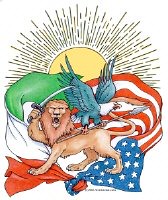
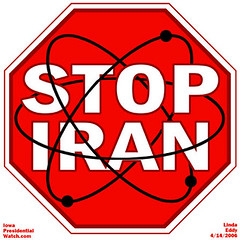

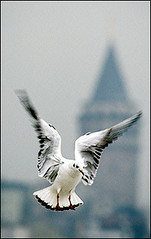



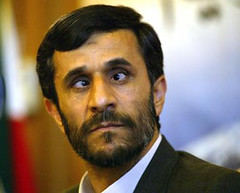

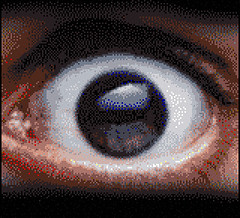

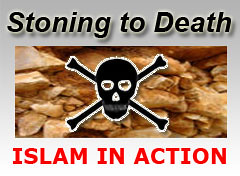

No comments:
Post a Comment